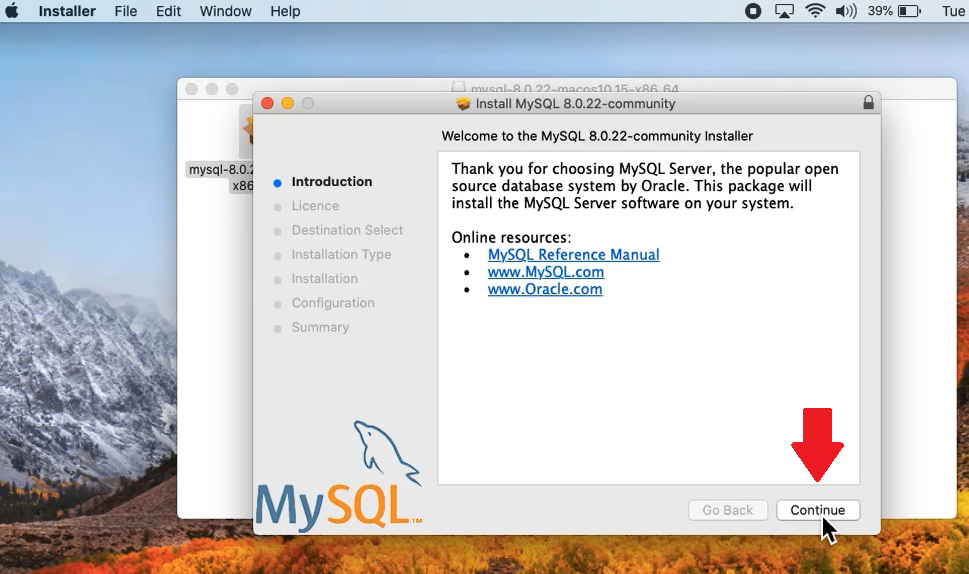

- #Steps to install mysql on mac how to#
- #Steps to install mysql on mac password#
- #Steps to install mysql on mac mac#
#Steps to install mysql on mac password#
Type in the command sudo rm /usr/local/mysql, this may ask for your administrator password
#Steps to install mysql on mac mac#
Follow these steps to uninstall MySQL on Mac manually: To uninstall MySQL you will have to open the terminal in order to completely remove it from your Mac. On a side note, deleting other programs using the drag method also leaves a lot of files still on the Mac, which takes up space and you definitely don’t want that in the long run. Unlike other programs where you can simply drag the program into the trash bin and delete it, MySQL does not work that way. MySQL is a little unique, in order to successfully uninstall and maybe reinstall MySQL you will need to open the terminal in order to finish the uninstallation process first. PowerMyMac has made a rather difficult process very easy and efficient, it can be used by veterans and people who are not too well-versed in using Macs. When it is over, MySQL is now no longer on your Mac.
#Steps to install mysql on mac how to#

Uninstalling an app from Mac seems to be a little intimidating to people who aren’t too tech-savvy or have a lot of experience on Mac. There are a few steps that you need to take in order to uninstall MySQL on Mac. The last command we’ll need to run in terminal will allow Apache and PHP to access MySQL: sudo mkdir /var/mysql sudo ln -s /tmp/mysql.sock /var/mysql/mysql.It might be that you want to re-install MySQL on your Mac or maybe even get another version, whatever the reason might be, you need to uninstall MySQL. GRANT ALL ON *.* TO IDENTIFIED BY 'mypass' WITH GRANT OPTION You can then enter this command: mysql -u rootĮnter the following command into the MySQL prompt, change ‘mypass’ to be a secure password for the MySQL root user. Hit the ‘Esc’ key to exit insert mode and type “:wq” and hit enter to write and quit the editor.Ĭlose the terminal window and open a new one. Use the ‘i’ key to go into insert mode, then paste in this line:

Open up Terminal and issue this command: vi. Note that commands need to be copied/pasted starting after the “$” prompt in the examples. We need to do a few things from a command prompt. Note: If you visit this link from a Mac it will automatically select the OS X Platform. Look for the DMG of the latest 64-bit version (10.6 will work) Most of these tutorials will work on Lion as well. Today OS X 10.8 Mountain Lion was released and we are going to do a few write ups on how to install MySQL and do some basic CMS/Blog web hosting. Luckily by 10.7.3 most of the necessary web hosting functionality was added to Server.app.

Last year when OS X 10.7 Lion was released we found ourselves with a version of OS X Server without MySQL and basic web hosting capabilities.


 0 kommentar(er)
0 kommentar(er)
